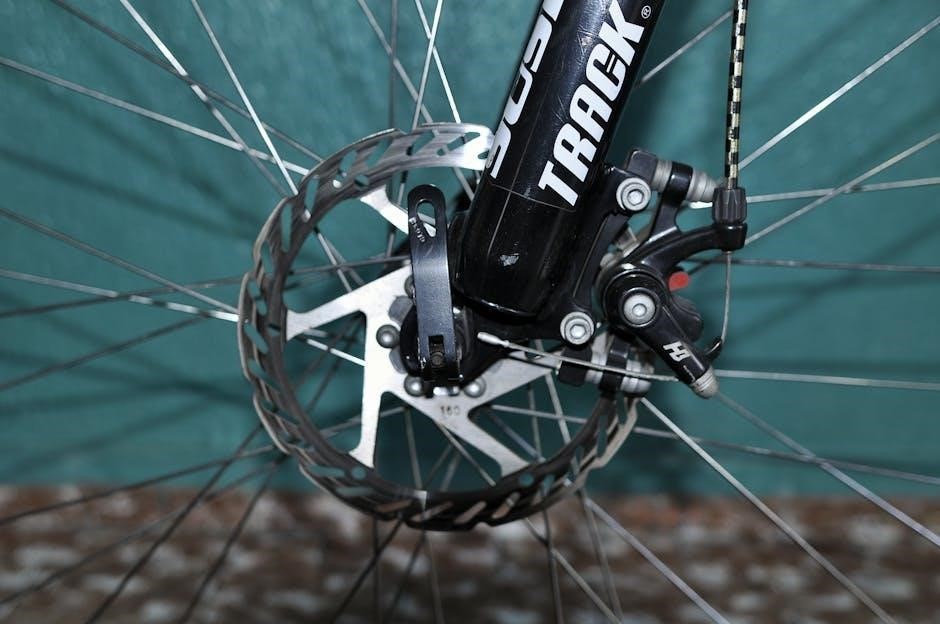brother sewing machine ls-2125i manual
This manual provides a comprehensive guide to understanding and operating the Brother LS-2125i sewing machine, covering setup, features, and troubleshooting for optimal sewing experiences.
1.1 Overview of the Brother LS-2125i Sewing Machine
The Brother LS-2125i is an electric sewing machine designed for versatility and ease of use. It caters to both beginners and hobbyists, offering essential features for various sewing tasks. With a range of built-in stitch options and a 4-step buttonhole feature, it simplifies both basic and decorative sewing projects. Its compact design and user-friendly interface make it an ideal choice for home use. The machine is supported by detailed manuals and guides, ensuring users can maximize its capabilities and maintain it properly for lasting performance.
1.2 Key Features of the Brother LS-2125i
The Brother LS-2125i features 10 built-in stitch patterns, including straight, zigzag, and decorative stitches, along with a convenient 4-step buttonhole function. It includes adjustable stitch length and width, allowing for customization. The machine is lightweight and portable, making it easy to store and transport. Additional features include a free-arm design for sewing cuffs and sleeves and compatibility with twin needles for advanced projects. Its intuitive controls and robust construction ensure reliable performance for various sewing tasks, making it a versatile tool for sewists of all skill levels.
1.3 Importance of Reading the Manual
Reading the Brother LS-2125i manual is essential for safe and effective operation. It provides detailed instructions on setup, usage, and troubleshooting, ensuring you understand the machine’s features and capabilities. The manual highlights safety precautions, such as proper handling and electrical guidelines, to prevent accidents. It also explains how to maintain the machine, adjust settings, and resolve common issues. By following the manual, you can optimize performance, extend the machine’s lifespan, and make the most of its functions. It serves as a valuable resource for both beginners and experienced users.
Safety Precautions and Guidelines
Ensure safe operation by following electrical safety tips, proper usage guidelines, and regular maintenance routines. Adhere to all instructions to prevent accidents and prolong machine lifespan.
2.1 General Safety Instructions
To ensure safe operation, always follow basic safety precautions. Turn off the machine when threading, changing needles, or making adjustments. Use only genuine Brother accessories to maintain performance and safety. Avoid using damaged cords or plugs, as they pose electric shock risks. Keep loose clothing and long hair tied back while sewing. Never leave the machine unattended, especially near children. Regularly inspect and maintain the machine to prevent malfunctions. By adhering to these guidelines, you can enjoy a safe and trouble-free sewing experience with your Brother LS-2125i.
- Always turn off the machine before making adjustments.
- Use only authentic Brother accessories.
- Never operate with a damaged cord or plug.
- Keep loose clothing and hair tied back.
- Regularly inspect and maintain the machine.
2.2 Electrical Safety Tips
Ensure the sewing machine is used with a stable power source. Avoid using damaged cords or plugs, as they can cause electric shock. Never expose the machine to water or moisture, as this poses serious electrical hazards. Keep the machine unplugged when not in use or during maintenance. Always follow the manufacturer’s guidelines for electrical connections and avoid overloading circuits. Regularly inspect the power cord for signs of wear or damage. By adhering to these electrical safety tips, you can prevent potential hazards and ensure safe operation.
- Use a stable and undamaged power source.
- Keep the machine away from water and moisture.
- Unplug the machine during maintenance.
- Inspect the power cord regularly.
2.3 Maintenance and Care Tips
Regular maintenance ensures optimal performance of your Brother LS-2125i; Clean dust and lint from the machine, especially around the bobbin area, to prevent jams. Lubricate moving parts periodically to keep them running smoothly. Always use Brother-recommended accessories to maintain machine efficiency and durability.
- Clean the machine regularly, focusing on the bobbin and needle areas.
- Lubricate moving parts as specified in the manual.
- Inspect for worn or damaged parts and replace them promptly.
- Use only Brother-recommended accessories and supplies.

Setting Up Your Brother LS-2125i Sewing Machine
Unpack and inventory all accessories, then assemble the machine following the manual. Thread the machine correctly and install the bobbin for smooth operation.
3.1 Unpacking and Inventory of Accessories
Begin by carefully unpacking the Brother LS-2125i sewing machine and its accessories. Check for the sewing machine, power cord, user manual, and additional components like needles, bobbins, and presser feet. Ensure all items listed in the manual are included to avoid missing any essential parts. Organize the accessories in a safe, accessible location to prevent loss or damage. Familiarize yourself with each accessory’s purpose before proceeding to assembly and setup. This step ensures a smooth and efficient initial setup process.
3.2 Assembly and Initial Setup
Place the Brother LS-2125i sewing machine on a stable, flat surface; Attach the sewing table if provided. Insert the needle by aligning the flat side with the machine’s guide and securing it firmly. Plug in the power cord, ensuring it’s connected to a functional outlet. Turn on the machine to test its basic functions without thread. Familiarize yourself with the control panel and ensure all parts are properly aligned. Refer to the manual for specific assembly instructions tailored to your model. Once assembled, your machine is ready for threading and initial use.
3.3 Threading the Machine
Turn off the machine and raise the needle to its highest position using the handwheel. Locate the thread guide on the machine’s upper section. Gently pull the thread through the guide, ensuring it’s seated properly. Follow the thread path indicated on the machine, looping it around the tension discs. Leave a small loop at the end and pull gently to seat the thread. Finally, test the thread tension by sewing a straight stitch on a scrap piece of fabric to ensure it’s even and consistent.
3.4 Winding and Installing the Bobbin
Turn off the machine and raise the needle to its highest position. Place the bobbin on the bobbin winder and insert the thread through the bobbin’s hole. Wind the thread evenly around the bobbin by turning the handwheel or using the automatic winder. Once full, cut the thread and remove the bobbin. Insert the bobbin into the bobbin case, ensuring the thread unwinds counterclockwise. Pull the thread gently to seat it, then close the bobbin case securely. Always check that the bobbin is properly installed before sewing.

Basic Sewing Operations
Learn essential sewing techniques, including selecting stitch types, adjusting tension, and sewing straight or zigzag lines. Understand threading, fabric placement, and starting your first sewing project successfully.
4.1 Selecting the Right Stitch Type
Selecting the right stitch type is essential for achieving professional results. The Brother LS-2125i offers various built-in stitches, including straight, zigzag, and decorative options. Choose straight stitches for basic sewing, zigzag for elastic fabrics, and decorative stitches for embellishments. Refer to the stitch chart in the manual to match the stitch type with your fabric and project needs. Proper stitch selection ensures strong seams and a polished finish, making your sewing projects both durable and visually appealing. Always test stitches on scrap fabric before starting your project.
4.2 Adjusting Tension and Stitch Length
Proper tension and stitch length adjustments are crucial for optimal sewing results. The Brother LS-2125i allows easy adjustment of thread tension using the tension dial, ensuring balanced stitching. Stitch length can be adjusted using the stitch length dial, with shorter lengths for delicate fabrics and longer lengths for heavier materials. Always test tension and stitch length on scrap fabric before sewing to achieve the desired results. Proper adjustments prevent puckering, loose threads, and uneven stitching, ensuring professional-looking seams and fabric handling.
4.3 Sewing Straight Stitches
To sew straight stitches on the Brother LS-2125i, select the straight stitch option and ensure the machine is properly threaded. Place your fabric under the presser foot, aligning the edge with the guide. Gently pull the fabric as it feeds through the machine, maintaining consistent speed for even stitching. Avoid pulling too tightly to prevent misalignment. Use the handwheel to manually lower the needle if needed. Keep the fabric smooth and flat throughout the process for professional-looking straight seams.
4.4 Sewing Zigzag Stitches
To sew zigzag stitches on the Brother LS-2125i, select the zigzag stitch option using the stitch selector. Adjust the stitch width and length as needed for your fabric type. Place the fabric under the presser foot, aligning the edge with the guide. Gently guide the fabric while sewing, maintaining steady movement for consistent results. Use the reverse stitch lever at the start and end to secure the seam. This stitch is ideal for stretchy fabrics or decorative purposes, offering versatility in your sewing projects.
Advanced Features of the Brother LS-2125i
The Brother LS-2125i offers advanced features such as the 4-step buttonhole function, allowing precise and professional buttonhole creation. It also supports sewing with twin needles for decorative stitching. With its variety of built-in stitches, including utility and decorative options, the machine caters to both basic and creative sewing needs. These features make it versatile for handling different fabrics and projects, from everyday repairs to intricate designs, ensuring a seamless and professional sewing experience for users of all skill levels.
5.1 Using the 4-Step Buttonhole Feature
The Brother LS-2125i’s 4-step buttonhole feature simplifies creating professional buttonholes. Place your fabric under the needle, select the buttonhole stitch, and follow the machine’s guidance. The process automatically sews precise buttonholes in four easy steps. This feature is ideal for shirts, pants, and other garments requiring durable buttonholes. It works well with various fabrics, ensuring consistent results; For best outcomes, use a stabilizer and test the feature on scrap fabric first. This function enhances efficiency and delivers professional-quality buttonholes effortlessly.
5.2 Sewing with Twin Needles
The Brother LS-2125i allows sewing with twin needles for parallel stitching, ideal for hems, topstitching, and decorative seams. To use twin needles, install the adapter, thread both needles, and select the twin needle stitch. Adjust tension for even stitching and test on scrap fabric. This feature enhances creativity and efficiency in projects like garments and home decor. Ensure proper alignment and fabric stability for professional results. Twin needles expand your sewing capabilities, offering versatility for various fabric types and designs.

Troubleshooting Common Issues
This section addresses frequent problems like thread breakage, machine startup issues, and bobbin-related errors. It provides step-by-step solutions to ensure smooth operation and resolve common malfunctions effectively.
6.1 Machine Not Turning On
If the Brother LS-2125i sewing machine fails to power on, first check the power cord connection. Ensure it is securely plugged into a functioning outlet and the power switch is in the “On” position. Verify there are no tripped circuit breakers or blown fuses. If issues persist, inspect the cord for damage or fraying. Consult the manual for further troubleshooting steps or contact Brother support for assistance. Always prioritize electrical safety when diagnosing power-related problems.
6.2 Thread Breakage and Tension Problems
Thread breakage and tension issues can disrupt sewing. Check if the thread is of high quality and properly threaded through the machine. Ensure the tension dials are set correctly, as incorrect settings can cause uneven stitching or breakage. Avoid pulling the thread forcefully, as this may damage the machine or cause misalignment. If the issue persists, refer to the manual for guidance on adjusting tension or contact Brother support for further assistance. Proper thread handling and machine calibration are key to resolving these problems effectively.
6.3 Bobbin-Related Issues
Bobbin-related issues, such as improper winding or incorrect installation, can cause stitching problems. Ensure the bobbin is wound evenly and securely in the bobbin case. If thread is loosely wound, rewind it firmly. Check for debris or lint in the bobbin area and clean it gently. If the bobbin is not seated correctly, remove and reinsert it, ensuring it clicks into place. Refer to the manual for proper bobbin installation steps. If issues persist, consider using a Brother-compatible bobbin or consulting customer support for assistance.
6.4 Error Codes and Solutions
The Brother LS-2125i may display error codes indicating specific issues. Common codes include E1 (thread breakage), E2 (bobbin problems), or E3 (mechanical issues). For E1, re-thread the machine and ensure proper tension. For E2, check bobbin installation and alignment. E3 may require professional servicing. Always refer to the manual for code meanings and solutions. If issues persist, contact Brother support or visit an authorized service center for assistance. Regular maintenance can help prevent these errors and ensure smooth operation.

Maintenance and Cleaning
Regular maintenance involves cleaning the machine, lubricating moving parts, and inspecting for worn components; This ensures optimal performance and prevents operational issues over time.
7.1 Regular Cleaning of the Machine
Regular cleaning is essential to maintain the performance and longevity of your Brother LS-2125i. Use a soft brush to remove lint and debris from the machine, especially around the bobbin area and feed dogs. Turn the handwheel to access hard-to-reach spaces. Avoid using harsh chemicals or abrasive materials, as they may damage the machine’s finish. For thorough cleaning, refer to the manual’s maintenance section. Clean the machine after each project to prevent dust and thread residue from building up. This simple routine ensures smooth operation and extends the machine’s lifespan.
7.2 Lubricating the Machine
Regular lubrication is crucial for maintaining the Brother LS-2125i’s smooth operation. Use only Brother-approved sewing machine oil to prevent damage. Apply a few drops to the hook race and tension discs as specified in the manual. Avoid over-lubrication, as it may attract dust and cause residue buildup. Lubricate every 1-2 months or when you notice increased noise or friction. Proper lubrication ensures the machine runs quietly, reduces wear on moving parts, and extends its lifespan. Always refer to the manual for specific lubrication points and instructions.
7.3 Checking and Replacing Parts
Regularly inspect the needle, bobbin, and presser foot for wear or damage. Replace the needle every 1-2 months or when it shows signs of dullness, rust, or bending. Check the bobbin case for lint buildup and damage. The presser foot should be replaced if it becomes warped or cracked. Always use genuine Brother parts to ensure compatibility and performance. Refer to the manual for specific replacement instructions and diagrams. Proper part maintenance ensures smooth stitching and prevents mechanical issues. Replace parts promptly to avoid machine malfunction and extend its lifespan.

Accessories and Consumables
Explore compatible needles, presser feet, threads, and additional accessories designed for the Brother LS-2125i to enhance your sewing experience and ensure optimal performance.
8.1 Compatible Needles and Presser Feet
For optimal performance, use genuine Brother needles and presser feet designed for the LS-2125i. Standard sewing needles are ideal for everyday use, while specialized needles like zigzag, twin, and heavy-duty options cater to specific fabrics and techniques. Presser feet such as the zigzag foot, buttonhole foot, and zipper foot enhance versatility. Always choose accessories compatible with your machine to ensure smooth operation and prevent damage. Refer to the manual or Brother’s official website for a full list of compatible accessories.
8.2 Recommended Threads and Fabrics
The Brother LS-2125i is compatible with a variety of threads and fabrics, ensuring versatility for different sewing projects. Cotton, polyester, and blended fabrics work well for everyday sewing, while silk, linen, and stretch fabrics can be used with appropriate settings. Use high-quality cotton or polyester threads for consistent stitching. For heavy-duty projects, consider using denim or canvas with a heavy-duty needle. Always match the thread type to the fabric for optimal results and adjust tension settings as needed for smooth operation.
8;3 Additional Accessories Available
Enhance your sewing experience with optional accessories designed for the Brother LS-2125i. These include a variety of presser feet, such as zigzag, zipper, and blind hem feet, to accommodate different stitching needs. Additional bobbins, twin needles, and specialized needles for heavy-duty fabrics are also available. An extension table can provide extra workspace for larger projects, while a hard case offers protection during storage or travel. These accessories expand the machine’s versatility, allowing you to tackle a wider range of sewing tasks with ease and precision.

Warranty and Support Information
Your Brother LS-2125i comes with a comprehensive warranty covering parts and labor. For inquiries or repairs, contact Brother’s customer support or visit an authorized service center.
9.1 Understanding Your Warranty
Your Brother LS-2125i sewing machine is backed by a comprehensive warranty that covers parts and labor for a specified period. The warranty typically includes 25 years for the machine head, 5 years for electrical components, and 1 year for labor. It is essential to review the warranty card provided with your purchase to understand the terms and conditions. The warranty protects against manufacturing defects but may not cover damage caused by misuse or improper maintenance. For more details, refer to the warranty section in your manual or contact Brother’s customer support directly.
9.2 Contacting Brother Customer Support
For assistance with your Brother LS-2125i sewing machine, visit the official Brother website at www.brother.com. Navigate to the support section to access FAQs, troubleshooting guides, and downloadable resources. You can contact customer support via phone, email, or live chat for personalized help. Additionally, the website provides a “Contact Us” page with detailed information for your region; Ensure to have your machine’s serial number ready for efficient service. Brother’s dedicated team is available to address any queries or concerns regarding your sewing machine.
9.3 Finding Authorized Service Centers
To locate an authorized Brother service center near you, visit the official Brother website at www.brother;com. Use the “Where to Buy” tool or the “Service & Support” section to find certified service providers. Enter your location or product model to get a list of nearby centers. Ensure your machine is serviced by authorized centers for genuine parts and warranty compliance. Contact Brother customer support for assistance in finding the nearest center. This ensures reliable and high-quality service for your Brother LS-2125i sewing machine.
Downloading and Referencing the Manual
Visit the official Brother website to download the LS-2125i manual in PDF format. Explore additional resources, guides, and support materials for enhanced functionality and troubleshooting.
10.1 How to Download the Manual
To download the Brother LS-2125i manual, visit the official Brother website. Navigate to the “Support” section, select your product, and choose the manual option. Download the PDF file, ensuring it’s in your preferred language. Save it for easy access and reference. This guide provides detailed instructions for setup, operation, and troubleshooting, helping you maximize your sewing machine’s potential.
10.2 Navigating the Manual
Navigate the Brother LS-2125i manual by using the table of contents or index to quickly find specific topics. The manual is organized into sections like introduction, safety, setup, operations, and troubleshooting. Key sections include stitch selection, maintenance tips, and error code solutions. Use the page numbers or search function in digital versions for easy access. Familiarize yourself with the layout to efficiently locate guidance for various sewing tasks and machine care, ensuring optimal use of your Brother LS-2125i sewing machine.
10.3 Additional Resources and Guides
Beyond the manual, Brother offers additional resources to enhance your sewing experience. Visit the official Brother website for FAQs, video tutorials, and troubleshooting guides specific to the LS-2125i. You can also find user communities and forums where sewists share tips and solutions. For hands-on learners, Brother provides instructional videos demonstrating various techniques and machine maintenance. These resources ensure you maximize your machine’s potential and stay informed about updates or accessories. Explore these tools to deepen your understanding and improve your sewing skills with the Brother LS-2125i.






























































